I was really sad to see the matshow-based function initiated above by Justin Fletcher not completed for so long, so I decided to finish it. I got a bit carried away and as a result, the function is slightly over-engineered to account for some unusual scenarios that can easily happen in automated processing.
it is supposed to be a reliable, easy-to-use yet customizable waffle plot that wouldn't require any not-widely-used libraries (it only requires native Python and matplotlib). It should be resilient enough to be used in most scenarios even in automated processing, much like plots in matplotlib.
It is a class wrapped in a function for ease of use, with many parameters with default values, which can be changed if so desired.
import matplotlib.pyplot as plt
import matplotlib.patches as mpatches
from matplotlib.colors import LinearSegmentedColormap
def waffle_plot(
categories,
values,
width=10,
height=10,
cmap=plt.cm.viridis,
c=None,
bc="w",
autoscale=True,
over_represent=False,
vertical=True,
label_v=True,
label_p=False,
legend_ncols=1,
legend_loc=(1.35, 0.685),
figsize=(6.4, 4.8),
value_sign="",
font="DejaVu Sans",
fontsize=10,
font_c="black",
save=None,
):
"""
Makes a waffle plot, a customized matshow plot that represents
the proportions of different categories.
Parameters:
----------
categories: array-like
A collection of categories.
values: array-like
A collection of values corresponding to the categories.
width : int, default: 10
The width of the waffle plot in number of tiles.
height : int, default: 10
The height of the waffle plot in number of tiles.
cmap : matplotlib colormap, default: plt.cm.viridis
The colormap to use for generating colors for the categories.
c : array-like or list of colors or color, optional
Possible values:
- A scalar or sequence of n numbers to be mapped to colors
- A 2D array in which the rows are RGB or RGBA.
- A sequence of colors of length n.
- A single color format string.
A collection of colors to be used for the tiles of the different
categories. If not provided, colors will be generated from the cmap.
If 'c' is shorter then 'categories', the missing colors will be
taken from cmap.
bc : str, default: 'white'
The background color of the plot and the grid.
autoscale : bool, default: True
Whether to adjust the width and height of the plot to ensure that
all categories are represented by at least one tile. If autoscale
is True, the number of patches will grow until it can accomodate
the smallest non-zero value from values.
over_represent : bool, default: False
Whether to over-represent the proportions by using extra tiles for
the same category. If the smallest category has one tile and fills
less than 50% of it, if over_represent is True, the tile will still
have the category color. If over_represent is False, the tile will
adopt the color of the background.
vertical : bool, default: True
Whether to stack the tiles vertically (True) or horizontally (False).
label_v : bool, default: True
Whether to label the tiles with the corresponding values.
When True, it add value in brackets to the legend.
label_p : bool, default: False
Whether to label the tiles with the corresponding proportions.
When True, the function calculates the percentage of the value and
adds it in brackets to the legend. When both label_v and label_p
are True, it will add both, value after colon and percentage
in brackets.
legend_ncols : int, default: 1
The number of columns to use in the legend.
To make flat horizontal Legend, it should equal the number
of categories.
legend_loc : tuple, default: (1.35, 0.695)
The location of the legend as a tuple of x and y coordinates.
figsize : tuple, default: (6.4, 4.8)
The size of the figure as a tuple of width and height in inches.
value_sign : str, default: ''
A string to be used as a suffix for the value in the legend.
font : str, default: 'DejaVu Sans'
The font to be used for the labels in the legend.
font_c : str, default: 'black'
The color of the font to be used for the labels in the legend.
save : str, optional
The file name and path to save the plot to. If None, plt.show()
is used instead.
Returns:
-------
matplotlib.figure.Figure
The figure object of the waffle plot.
"""
# Instantiate Waffle class with arguments from the function
waffle = Waffle(
categories,
values,
width,
height,
cmap,
c,
bc,
autoscale,
over_represent,
vertical,
label_v,
label_p,
legend_ncols,
legend_loc,
figsize,
value_sign,
font,
fontsize,
font_c,
save,
)
# Create waffle attributes - an array and its' features
waffle.create_array()
# Map colormap and colors attributes for the waffle plot and it's legend
waffle.map_colors()
# Prepare the legend handles (strings and colors) for the waffle
waffle.prepare_legend_handles()
# Plot the waffle
waffle.plot()
class Waffle:
"""
Creates a waffle object.
"""
def __init__(
self,
categories,
values,
width,
height,
cmap,
c,
bc,
autoscale,
over_represent,
vertical,
label_v,
label_p,
legend_ncols,
legend_loc,
figsize,
value_sign,
font,
fontsize,
font_c,
save,
):
self.categories = categories
self.values = values
self.width = width
self.height = height
self.cmap = cmap
self.c = c
self.bc = bc
self.autoscale = autoscale
self.over_represent = over_represent
self.vertical = vertical
self.label_v = label_v
self.label_p = label_p
self.legend_ncols = legend_ncols
self.legend_loc = legend_loc
self.figsize = figsize
self.value_sign = value_sign
self.font = font
self.fontsize = fontsize
self.font_c = font_c
self.save = save
def create_array(self):
"""
Creates an array attribute and it's features for the waffle.
"""
# Getting sorted categories and values
self.categories, self.values = zip(
*sorted(zip(self.categories, self.values), key=lambda x: x[1], reverse=True)
)
self.values_non_zero = len([val for val in self.values if val > 0])
self.proportions_non_zero = [
(float(v) / sum(self.values)) for v in self.values if v > 0
]
# autoscaling_done - a condition variable for 'while' loop for auto-scaling
autoscaling_done = False
while autoscaling_done is False:
total = self.width * self.height
tiles_per_category = [
round(proportion * total) for proportion in self.proportions_non_zero
]
# Make a dummy matrix for use in plotting.
self.array = [
[0 for col in range(self.width)] for row in range(self.height)
]
# Popoulate the dummy matrix with integer values.
category_index = 0
tile_index = 0
if self.vertical:
x = self.width # i is a row
y = self.height # j is a col
else:
x = self.height # i is a col
y = self.width # j is a row
# Iterate over each tile.
for i in range(x):
for j in range(y):
tile_index += 1
# If the number of tiles populated is sufficient for
# this category...
if tile_index > sum(tiles_per_category[0:category_index]):
# ...increment to the next category.
category_index += 1
# Set the category value to an integer, which increases
# with category.
if self.vertical:
self.array[j][i] = category_index
else:
self.array[i][j] = category_index
if len(set([item for sublist in self.array for item in sublist])) < len(
self.proportions_non_zero
):
if self.autoscale:
autoscaling_done = False
self.width += 1
self.height += 1
else:
autoscaling_done = True
else:
autoscaling_done = True
if self.autoscale is False:
# If number of unique values in waffle is smaller than number of bins,
# reduce number of bins
if (
len(set([i for sublist in self.array for i in sublist]))
< self.values_non_zero
):
self.values_non_zero = len(
set([i for sublist in self.array for i in sublist])
)
if any(self.values) > 0:
# Compute the portion of the total assigned to each category.
self.proportions = [(value / sum(self.values)) for value in self.values]
else:
self.proportions = [
1 for v in self.values
] # Just so it does not throw an error
return (
self.array,
self.height,
self.width,
self.proportions,
self.values_non_zero,
self.proportions_non_zero,
)
def map_colors(self):
"""
Maps colormap and colors attributes for the waffle plot and it's legend.
"""
# Getting number of categories
self.cmap = self.cmap.resampled(len(self.categories))
# Getting number of bins. We don't need bins for empty (== 0) categories,
# we are only counting non-zero values
if self.c is None:
self.c = [self.cmap(x) for x in range(len(self.categories))]
else:
# If there are fewer colors than categories...
if len(self.c) < len(self.categories):
# Extend list c with appropriate number of colors from colormap
self.c.extend(
[self.cmap(x) for x in range(len(self.categories))][len(self.c) :]
)
elif len(self.c) > len(self.categories):
# Cutting color list in case we have more colors than categories
self.c = self.c[: len(self.categories)]
# Instead of 'c', using special version 'c_for_cmap', that is cut at
# the length equal to number of bins
self.c_for_cmap = self.c[: self.values_non_zero]
if not self.over_represent and len(self.c_for_cmap) == len(
[val for val in self.values if val > 0]
):
for i in self.proportions_non_zero:
if i < 0.5 * (1 / (self.height * self.width)):
self.c_for_cmap[-1] = self.bc
if any(self.values) > 0:
# Constructing colormap
cmap_name = "the_cmap"
self.cmap = LinearSegmentedColormap.from_list(
cmap_name, self.c_for_cmap, N=self.values_non_zero
)
return self.cmap, self.c, self.c_for_cmap
def prepare_legend_handles(self):
"""
Prepares the legend handles for the waffle.
"""
# variables for the legend
values_cumsum = [sum(self.values[: i + 1]) for i in range(len(self.values))]
total_values = values_cumsum[len(values_cumsum) - 1]
# Empty list, that will be filled with legend handles
self.legend_handles = []
# Constructing the legend. Depending on the controls, it can have:
for i, (category, color) in enumerate(zip(self.categories, self.c)):
if (
self.label_v and not self.label_p
): # Values only, with the sign or without it
if self.value_sign == "%":
label_str = f"{category} ({self.values[i]}{self.value_sign})"
else:
label_str = f"{category} ({self.value_sign}{self.values[i]})"
elif (
self.label_v and self.label_p
): # Values and percentages calculated automatically
if self.value_sign == "%":
label_str = f"{category}: {self.values[i]}{self.value_sign} ({self.proportions[i] * 100:.2f}%)"
else:
label_str = f"{category}: {self.value_sign}{self.values[i]} ({self.proportions[i] * 100:.2f}%)"
elif (
not self.label_v and self.label_p
): # only percentages calculated automatically
label_str = f"{category} ({self.proportions[i] * 100:.2f}%)"
if not self.label_v and not self.label_p: # The name of the category only
label_str = f"{category}"
self.legend_handles.append(mpatches.Patch(color=self.c[i], label=label_str))
return self.legend_handles
def plot(self):
"""
Plots the waffle.
"""
# Grid line auto-adjustment
if self.height < 25 and self.width < 25:
linewidth = 1
else:
linewidth = 0.5
# Create a new figure and ax
fig, ax = plt.subplots(figsize=self.figsize, facecolor=self.bc)
if len(self.c_for_cmap) > 1:
# Visualisng the waffle array as waffle plot
ax.matshow(self.array, cmap=self.cmap)
else:
# Visualisng the waffle array as waffle plot, only transparent
ax.matshow(self.array, alpha=0)
# With color control, to not get an empty plot for only one not empty
# category, a facecolor has to be set. Same for the special case of
# empty waffle.
if len(self.c_for_cmap) < 1:
ax.set_facecolor("lightgrey")
elif len(self.c_for_cmap) < 2:
ax.set_facecolor(self.c[0])
# Minor ticks
ax.set_xticks([x - 0.5 for x in range(self.width)], minor=True)
ax.set_yticks([x - 0.5 for x in range(self.height)], minor=True)
# Switch the sticking out ticks off (by setting length to 0):
ax.tick_params(axis="both", which="both", length=0)
# Gridlines based on minor ticks
ax.grid(which="minor", color=self.bc, linestyle="-", linewidth=linewidth)
# Switch off the numbers associated with ticks
plt.xticks([])
plt.yticks([])
# Add the legend
l = ax.legend(
handles=self.legend_handles,
loc="lower center",
ncol=self.legend_ncols,
labelcolor=self.font_c,
bbox_to_anchor=self.legend_loc,
)
# Font controls for the legend
plt.setp(l.texts, family=self.font, fontsize=self.fontsize)
# Option to save an image
if self.save is not None:
plt.savefig(self.save, bbox_inches="tight", dpi=300)
else:
plt.show()
Some use examples:
Basic use:
import pandas as pd
import matplotlib.pyplot as plt # for non-default colormaps
df = pd.DataFrame({'categories': ['cat1', 'cat2', 'cat3', 'cat4'],
'values': [44911, 20642, 10543, 8565]})
waffle_plot(df['categories'], df['values'])

df1 = pd.DataFrame({ 'categories': ['cat1', 'cat2', 'cat3', 'cat4'],
'values': [84911, 14414, 10062, 1] })
waffle_plot(df1['categories'], df1['values'])

Horizontal:
waffle_plot(df['categories'], df['values'], vertical=False)

Different shapes and sizes:
waffle_plot(df['categories'], df['values'], 20, 7, cmap=plt.cm.plasma, figsize=(12,7), legend_loc=(0.50,-0.11),
legend_ncols=4)

Colors, background, labels:
df9 = pd.DataFrame({ 'categories': ['a', 'b', 'c', 'd', 'e', 'f'],
'values': [70, 31, 61, 10, 44, 90] })
waffle_plot(df9['categories'], df9['values'], 20, 7, cmap=plt.cm.plasma, bc=blackish,
figsize=(13,7), legend_ncols=len(df9['categories']), legend_loc=(0.5, -0.12), label_p=True,
value_sign='$', font_c='darkblue')

More examples of use can be found here:
https://github.com/jan-niedospial/waffle_plot/blob/main/Waffle_plot_examples.ipynb











